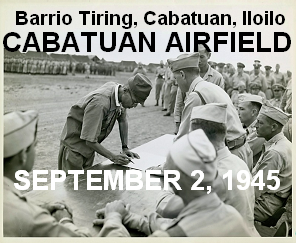
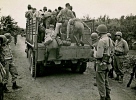
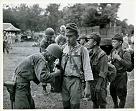
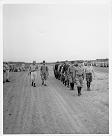
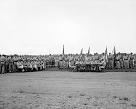
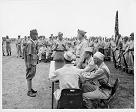
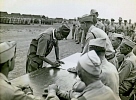
Col. Ryoichi Tozuka signs the surrender instrument
as Col. Raymond G. Stanton looks on.
Cabatuan Airfield
Barrio Tiring, Cabatuan, Iloilo
Panay Island, Philippines, September 2, 1945
|
|
- o -
|
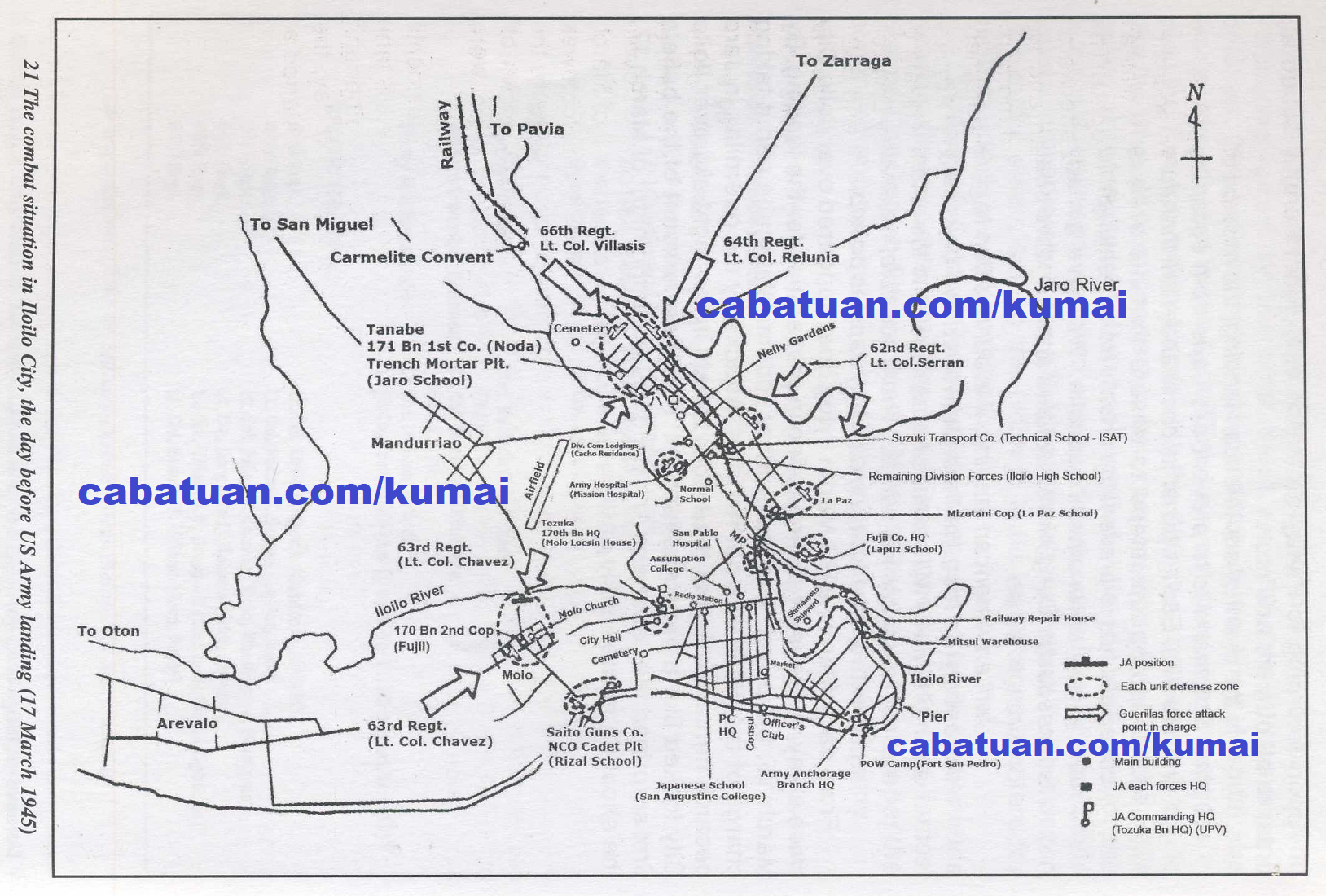
The combat situation in Iloilo City the day before US Army landing (17 March 1945). Page 94.
|
|
Chapter 8 – Destruction
8.1 US Forces Land on Panay
Early in the morning of March 18, I was awakened by the sound of heavy explosions from the direction of the Tigbauan garrison. It was an emergency signal from the garrison but it suddenly stopped. The time was 4:50 a.m. The explosions lasted a few minutes and afterwards silence returned. We could not make contact with Tigbauan and we received no information from any of the other garrisons. At that moment, indeed, the garrison of the 3rd Company was blown off by bombardment from warships of the US Fleet and transport convoy led by Rear Admiral A.D. Struble, under the command of Vice Admiral Thomas C. Kinkaid of the US 7th Fleet. Around 7,000 men of the US Army’s 40th Infantry Division (185th Regimental Combat Team and 160th Infantry Regiment and 542nd Engineering Unit) headed by Maj. Gen. Rapp Brush had landed at Tigbauan. Around 200 vehicles such as tanks and military trucks were counted just along the road between Tigbauan and Cordova.
First Lieutenant Chiyomi Toyota of the 3rd Company stationed at the Cordova garrison was the only officer who witnessed the landing of the US forces. The Cordova position stood on a hill eight kilometers north of Tigbauan overlooking the Panay Gulf. With 30 other soldiers, Toyota had successfully parried guerrilla attacks. In the early morning of March 18, however, he awoke to terrible explosions and climbed the watchtower.
He saw the blue-white lights of the warship bombardment and heard the blasts. Flashes from the Kawano unit’s position in Tigbauan, blown off by about 1,500 shells from bombardment of the landing warships, were also visible.
Eagerly waving little American and Filipino flags, the local residents excitedly welcomed the US forces in a festive atmosphere. The US tank forces attacked the Cordova position and Cabatuan airfield. Another unit entered Iloilo City to scout for other Japanese. On the same day, the construction of a temporary runway made of steel matting was started at Oton and was completed the next day.
Around 2 p.m., we suddenly heard guns in the direction of Molo – a dozen shots that moved from point to point, which made me wonder if the guerrillas had finally started using self-propelled guns. Running and stumbling like a rolling ball, an orderly from the Fujii unit soon arrived to report, ‘The enemy tanks are attacking the Molo position.’ The second orderly followed with the report, ‘A dozen enemy tanks are approaching and fiercely attacking from the direction of Molo. There are three or four tanks at the Molo Bridge. The landmines all ended up misfiring. Hurry up and send reinforcements!’
Damn, all my reliable landmines had misfired. I stomped my feet in frustration. Now there was no doubt about the landing of the US forces. First Lieutenant Ishikawa immediately sent the Machine-Gun Force and NCO Cadet Platoon to reinforce the Molo position.
Fortunately, by the time the reinforcements rushed to the scene, the enemy tanks had just withdrawn after rampaging around to their satisfaction. In this battle, First Lieutenant Sugahara fought against a tank at close quarters and was killed in action. A direct hit of the tank’s machine gun blasted off his upper body.
|
|